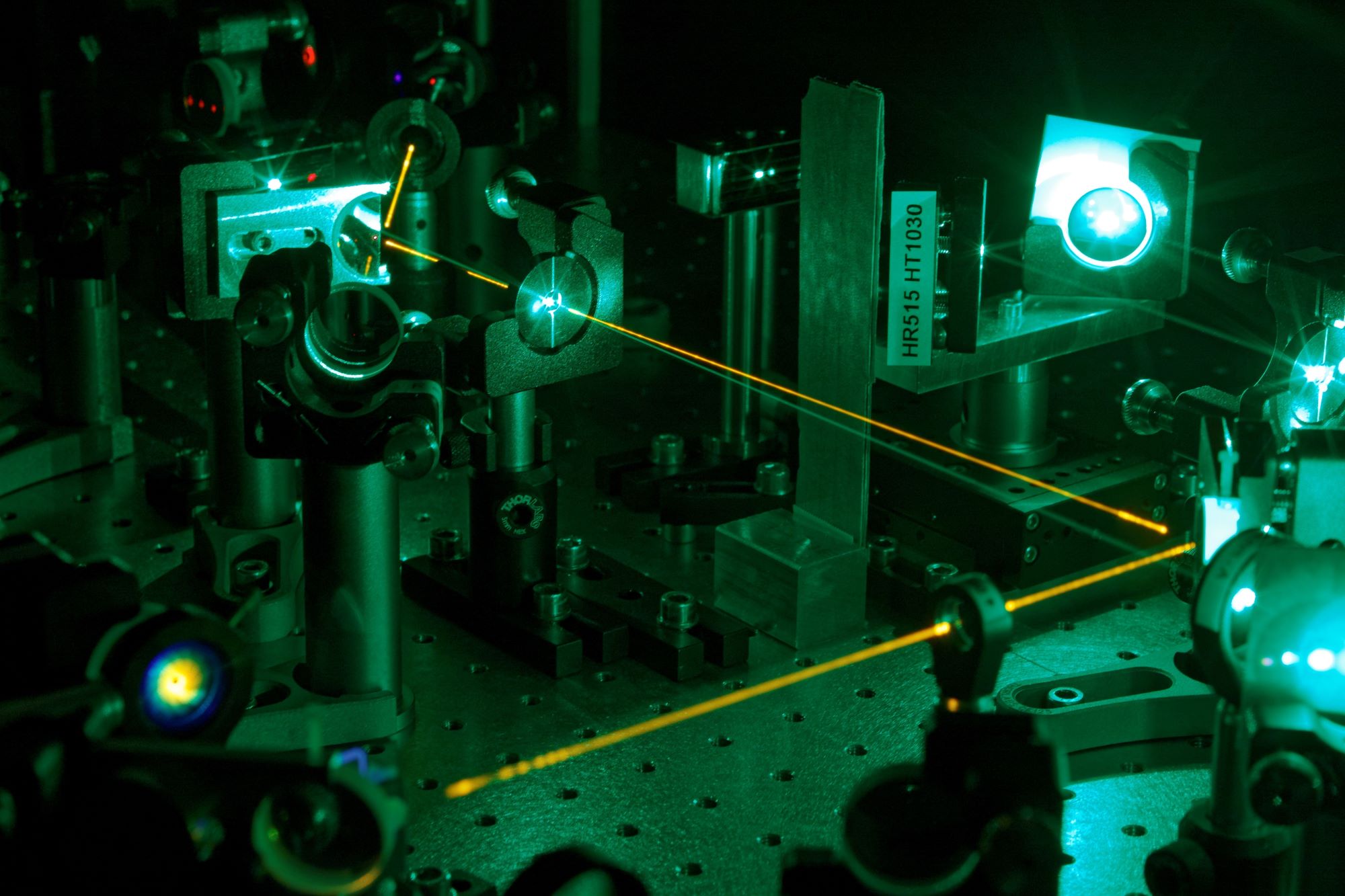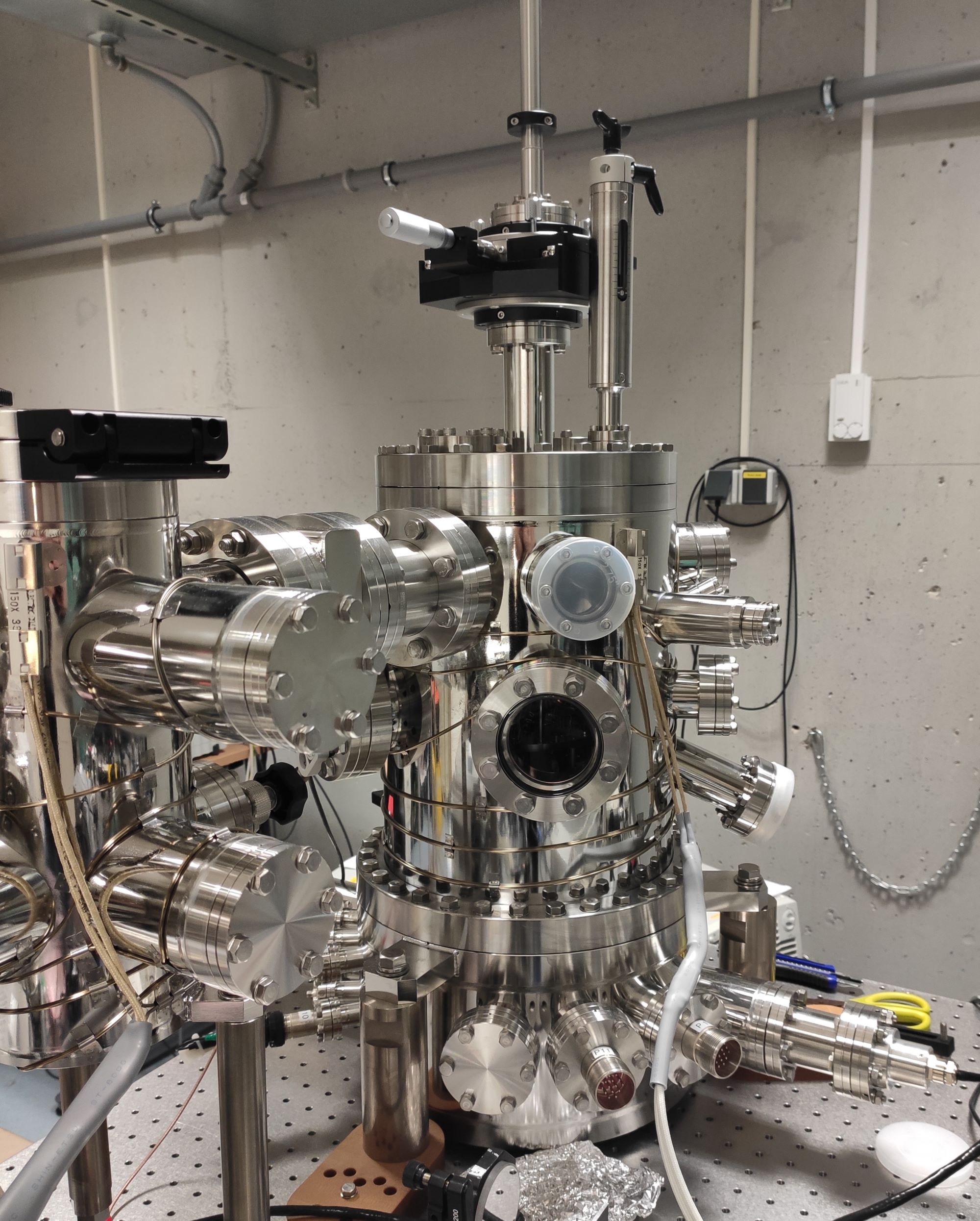Ultrafast Science research in Luxembourg
We devote ourselves to the study of ultrafast processes in condensed matter by means of advanced optical technology. In particular, we develop novel ultrafast techniques based on advanced nonlinear optics concepts with the main goal to investigate elementary quantum electronic processes in systems like 2-dimensional layered semiconductors, confined nanostructures and strongly correlated materials.
Research focus on Ultrafast Phenomena
Our activities are mainly concentrated in three broad areas. As a common framework, we strive to push the technological aspects of Ultrafast optics with the aim of develop unique tools for the investigation of physical phenomena that occur at extremely short timescales and in a broad range of energies that would be otherwise unaccessible.
Femtosecond Technology
The study of ultrafast phenomena requires us to develop novel laser sources.
For the reason we have a dedicated research line for the design of new laser concepts that allow us to scale pulse energy and repetition rate while preserving the possibility to deliver ultrashort pulses. Our systems are based on Er: fiber laser technology that show excellent robustness and flexibility. We employ this sources to seed high power Yb: and Tm:fiber amplifiers able to produce μJ level pulses at 10 MHz repetition rate. In alternative, thanks to thin disk technology.

Nonliner plasmonics
Plasmonics has been established as an important field of physics. This fact is largely due to its advantages in controlling and manipulating of light on sub-wavelength scales. In our ultrafast plasmonics laboratory, we generate and investigate surface plasmons as well as particle plasmons in micro- and nanostructures. Applying different techniques with a resolution on the nanometer scale, we can customize the structures for special applications. The equipment in our plasmonics laboratory enables us to optically excite plasmons in single nanostructures with intense ultrashort light pulses. It turns out that the possibility to produce nanostructures with high precision not only paves the way to manipulate light on the shortest spatial scales: also the temporal response of plasmonic devices can be tailored. This is even feasible down to the attosecond regime, that is shorter than one single oscillation of the light field. Just as their counterparts for radiofrequencies, optical antennas are ideally suited for the conversion of freely propagating electromagnetic waves into localized energy and vice versa. They enable us to control light on sub-wavelength dimensions. Thus, the diffraction-limited possibilities of light manipulation by conventional free-space optics like lenses or mirrors are vastly expanded.
Furthermore, the near-field amplification that can be achieved at optical antennas is also of great importance for advanced light-matter coupling. Additionally, the highly nonlinear optical response of nanoantennas promises to hold a huge application potential. We investigate this aspect also in semiconducting nanoantenna devices. We focus on their fundamental properties to assess their potential for sensing and we explore the possibility of active optical activation via control of the plasma frequency by near-IR excitation.
Femtosecond dynamics in layered materials
This research activity aims at the study of ultrafast electronic dynamics in the class of layered materials, ranging from two-dimensional systems with atomic thickness to topological insulators and nonconventional superconductors where dimensionality and the microscopic physics of two-dimensional electron gases play a key role. This research topic will require significant advances in ultrafast spectroscopy techniques and the development of a new setup for the study of femtosecond dynamics driven by impulsive photoexcitation. The particular interest in the physics of layered materials is related to their peculiar characteristics that can be technologically exploited in mono-atomically thick d vices for optoelectronics and electronics, thus overcoming the miniaturization limitations of current semiconductor technologies. A full study of the fundamental processes, such as electron-electron and electron-phonon scattering mechanisms occurring at this dimensional scale, calls for the implementation of an ultrafast spectroscopy system capable of extreme temporal resolution combined to broad spectral coverage and exceptional sensitivity.In particular, we will focus on the generation of ultrashort optical pulses in various spectral ranges to be employed in two-color pump-probe experiments with the goal to obtain sub-10-fs temporal resolution. High repetition rate will ensure sensitive detection of the small signal arising from few/mono-layered materials. With the novel spectroscopic tools developed in the project, it will be possible to unveil the ultimate charge dynamics that are at the basis for the optical and electronic properties in 2-dimensional systems.
